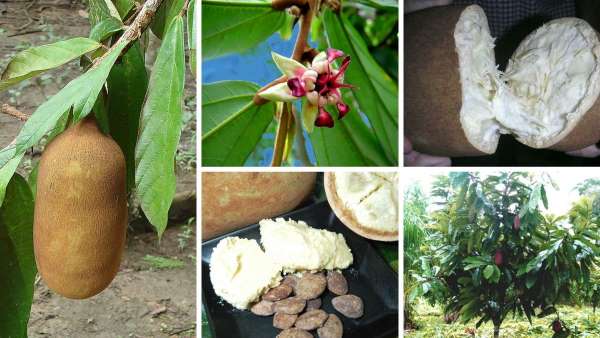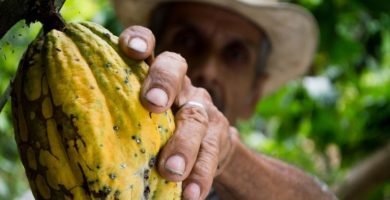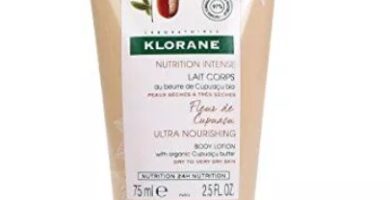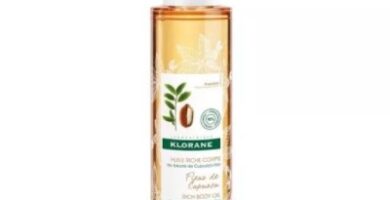
Incredible properties of Amazonian white cocoa. What is cupulate or chocoazú? Why is it excellent for the skin?
Cupuaçu, copoazú, cupuazú, or Amazonian white cocoa is a tropical fruit tree that belongs to the Sterculiaceae family, genus Theobroma, species: grandiflorum (CORPOICA-Amazon Fund, 1996) .
✅ Origin of Cupuacu (Theobroma grandiflorum)
Cupuaçu is a native of the eastern Amazon, and is currently scattered throughout the Amazon and in many areas of the humid tropics in South America, mainly in Peru, Bolivia, Colombia, northern Brazil and southern Venezuela (FAO, 1987).
However, in many of these countries, outside the Amazon basin, little is known about this fruit, its benefits and potential.
Copazu products on Aliexpress
✅ Description
Theobroma grandiflorum is a small to medium-sized evergreen tree (6-10 meters tall on average).
The fruit is thin-skinned, brown to reddish in color, has creamy yellow-white pulp that covers the seeds, and has a slightly acidic taste (FAO, 1987).
✅ Cupuaçu uses
The cupuaçu has been listed as one of the most promising fruits of the Amazon, being used in the production of juices, nectars, sweets, ice cream, jams, liqueurs, compotes, jellies and cupulate .
The economic value of Theobroma gandiflorum is linked to the fruit, which can be marketed fresh or processed, the pulp being very fleshy in a ratio of 2 to 1 with respect to the seed.
The cupulate or chocoazú and other derivatives of the fruit
The fruit is almost never consumed directly, its derivatives being more in demand (FAO, 1987). The seed is also used to obtain intermediate products such as cupuaçu powder and lard, as well as the production of cupulate (which is a chocolate-like product with a hint of citrus) and others. The shell is used as organic fertilizer.
Cosmetic products are also made from the fruit, including shampoo, creams, lotions and soaps. The pulp is also used to make butter and oil, with invaluable benefits for skin and hair.
✅ Nutritional value
The nutritional composition (Alimentos Andinos, 2020) for every 100 grams of cupuaçu is:
- 315 kcal.
- 11.40 g of carbohydrates
- 0.30 g of saturated fats
- 0.10 g of unsaturated fats; 0.8 g of protein
- 1.70 grams of fiber; 0.50 g of iron
- 331 mg of potassium; 21 mg of phosphorus
- 390 mg of pectin; 13mg calcium
- 0.05 mg of vitamin B3
- 26 mg of vitamin C
✅ Properties
Thanks to its content of unsaturated fats and fiber, the consumption of cupuaçu contributes to the protection of the cardiovascular system, helping to prevent high blood pressure, heart failure, heart disease and other related problems.
It also acts as an anti-inflammatory when applying a small layer of cupuaçu butter to the affected area. Likewise, its antioxidant power and the presence of vitamin C and contribution of Omega acids, allow it to improve the immune system by providing protection against viruses and bacteria.
On the other hand, it is important to mention that the processing (fermentation, drying and roasting) of the cupuaçu grains develops the so-called cupulate aroma and flavor precursors, increasing their quality.
Fermented grains have a higher content of polyphenols and a higher antioxidant power compared to grains that are dried and roasted. The dry-and-roast process results in a loss of 39-45% of polyphenols compared with those subjected to the fermentation process (Galeano, Cuellar and Schinella, 2012).
✅ Cupuaçu butter / Benefits for skin and hair
Cupuaçu butter (Copoazú Butter) is white, soft, and made up of beneficial fatty acids for skin and hair hydration. Every 100 grams of this product contains:
- 1.7 grams of protein
- 23 mg calcium
- 30 mcg of iron
- 0.04 mg of vitamin B1
- 0.04 mg of vitamin B2
- 33 mg of vitamin C (Inkanat Peru, 2020);
It is an excellent emollient for the care of dry or damaged skin.
This product is 1.5 times more moisturizing than shea butter (Alimentos Andinos, 2020); it also protects against the damaging effects of the sun’s UV rays.
It is ideal for chapped lips, especially in cold weather areas. It also fights cell aging that causes wrinkles and other skin problems.
Likewise, a small dose of cupuaçu butter applied to the hair provides a natural softness to it. It also encourages growth and hydration thanks to the natural acids it contains.
✅ Cupuaçu harvest as an inclusive business
Through the harvest of cupuaçu, structural changes can be promoted that improve the quality of life in the territories through the activation of:
- Territorial resources and their potential
- Bases of innovation
- Productivity transformation
- Strengthening of institutions
- Improved product valuation
- Strategic alliances between the public and private sectors
In addition to the inclusion of the most vulnerable population, the cupuaçu harvest develops inclusive businesses as a business model capable of creating new jobs and diversifying income, and reducing territorial inequalities in a sustainable manner.
Thus, cupuaçu and its derivatives constitute elements of innovation and, therefore, it is important that the participants develop a marketing plan to determine the viability of the projects beyond their economic dimension, responding to objectives such as:
- Identifying viable products to be industrialized and marketed
- Strengthening the infrastructure to support production
- Training the beneficiary population, among others, to reduce poverty, especially in rural Amazonia (Chaparro and López, 2017).
References
- Andean Foods, 2020. Copoazú or Cupuacu, retrieved from http://www.alimentoandinoespaña.es .
- Chaparro, AA and Lopez, CE 2017. Cupuaçu and inclusive businesses, a socioeconomic strategy in Florencia-Caquetá. Cooperativism and Development , (12), September. (PDF)
- CORPOICA-Amazon Fund. 1996. The cultivation of cupuassu ( Theobroma grandiflorum ) in the Colombian Amazon foothills. Florence: regional CORPOICA 10. ( PDF )
- Gaelano, P., Cuella, L. and Schinella, G. 2012 . Influence of cupuassu ( Theobroma grandiflorum ) grain processing on antioxidant activity and phenolic content. Vitae , (19), pp.285-287. ( PDF )
- FAO. 1987. Forest species producing fruits and other foods. Rome: FAO. ( PDF )
- Inkanat Peru. 2020. Copoazú: Amazonian Super Fruit with extraordinary cosmetic and nutritional properties, retrieved from http://www.inkanat.com .

Economist (Central University of Venezuela). Full professor and researcher attached to the “Edgar Abreu Olivo” Agrifood Research Center, Universidad de Los Andes. Doctor from the University of La Laguna (Spain). Award “One of the 10 most consulted authors of the Saber ULA university portal” (2005); prize in the III Essay Contest of the Central Bank of Venezuela BCvoz Economico, 2016, with the work “Theobroma cacao: transformation and consumption of the “food of the gods” in Venezuela and the world” (co-authored).
February 13, 2020

▷ Araza (Eugenia stipitata): the power of the Amazonian guava
January 25, 2020

Cocoa (Theobroma cacao)
October 5, 2019

Amazonian fruits – Jungle Fruits and Super Food
This post is also available in:
![]() Español (Spanish)
Español (Spanish)



